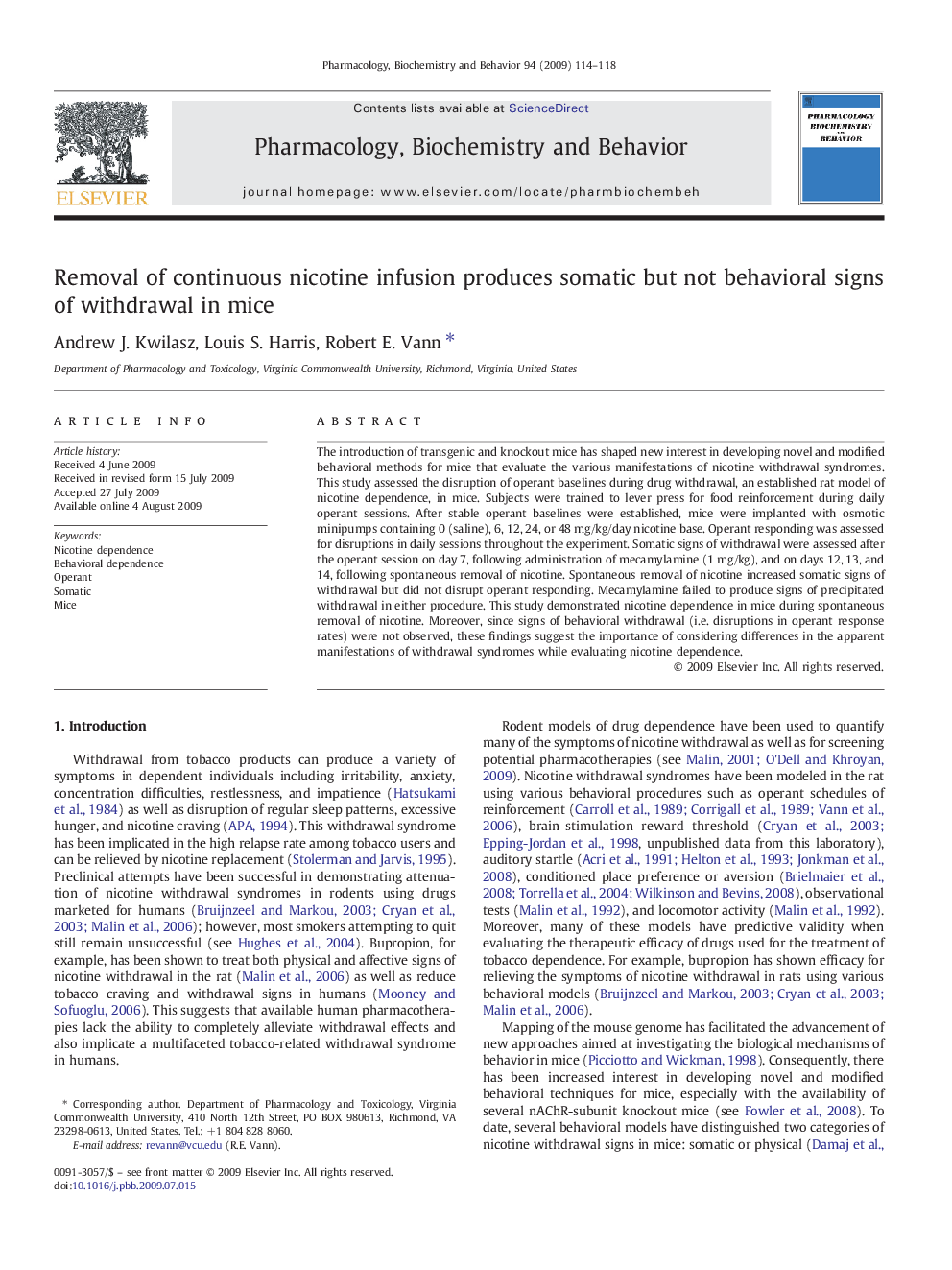| Article ID | Journal | Published Year | Pages | File Type |
|---|---|---|---|---|
| 2013600 | Pharmacology Biochemistry and Behavior | 2009 | 5 Pages |
The introduction of transgenic and knockout mice has shaped new interest in developing novel and modified behavioral methods for mice that evaluate the various manifestations of nicotine withdrawal syndromes. This study assessed the disruption of operant baselines during drug withdrawal, an established rat model of nicotine dependence, in mice. Subjects were trained to lever press for food reinforcement during daily operant sessions. After stable operant baselines were established, mice were implanted with osmotic minipumps containing 0 (saline), 6, 12, 24, or 48 mg/kg/day nicotine base. Operant responding was assessed for disruptions in daily sessions throughout the experiment. Somatic signs of withdrawal were assessed after the operant session on day 7, following administration of mecamylamine (1 mg/kg), and on days 12, 13, and 14, following spontaneous removal of nicotine. Spontaneous removal of nicotine increased somatic signs of withdrawal but did not disrupt operant responding. Mecamylamine failed to produce signs of precipitated withdrawal in either procedure. This study demonstrated nicotine dependence in mice during spontaneous removal of nicotine. Moreover, since signs of behavioral withdrawal (i.e. disruptions in operant response rates) were not observed, these findings suggest the importance of considering differences in the apparent manifestations of withdrawal syndromes while evaluating nicotine dependence.
